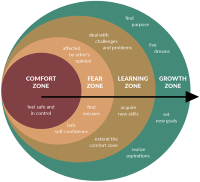You are in: Caribbean
Change location
You are here
Guiding Inclusive Classroom Conversations

Module 4: Guiding Inclusive Classroom Conversations
From Ways to Incorporate DEI into Your Courses
By David J. Luke, Chief Diversity Officer, University of Michigan, Flint

The Importance of Establishing Ground Rules
Approaching classroom conversations about racism, sexism, homophobia, ableism, and similar topics can generate fear and reticence among many students. There are numerous books on these topics, guides for having courageous conversations about race, crucial conversations and how to handle opposition that you might encounter in the form of, for example, white fragility...more.

Intent vs. Impact
In social justice work we often talk about the difference between intent and impact. Often, when things go awry and marginalized students are impacted, the person responsible for that impact focuses on their own intent. The fear of being labeled racist, sexist, or just “bad” can contribute to a defensive feeling that no longer centers the impacted students. Instead, the challenge is to focus on those who were directly impacted...more.

Encourage Participation and Check In
Finally, it’s important, in managing classroom discussions, to get feedback from students about how you’re doing. Provide opportunities for anonymous feedback, for example, by asking students at the end of a class period to...more.

Three Important Takeaways
Enter into these spaces authentically and model the behavior you’d like to see from your students. If you’re engaging in conversations about racism, sexism, homophobia and transphobia, and you want the students to participate, you need...more.